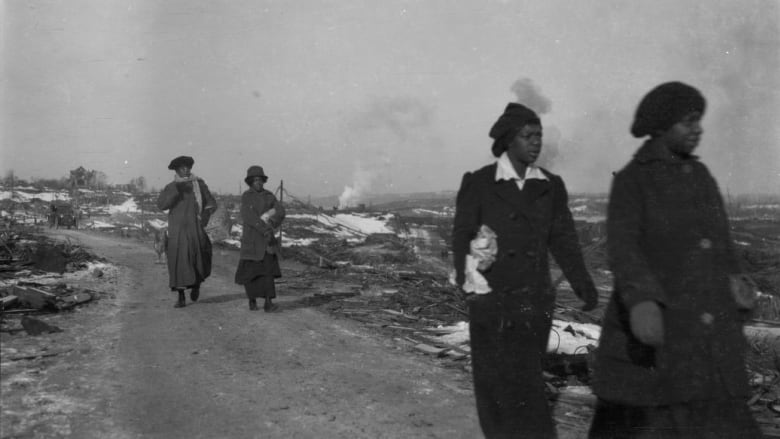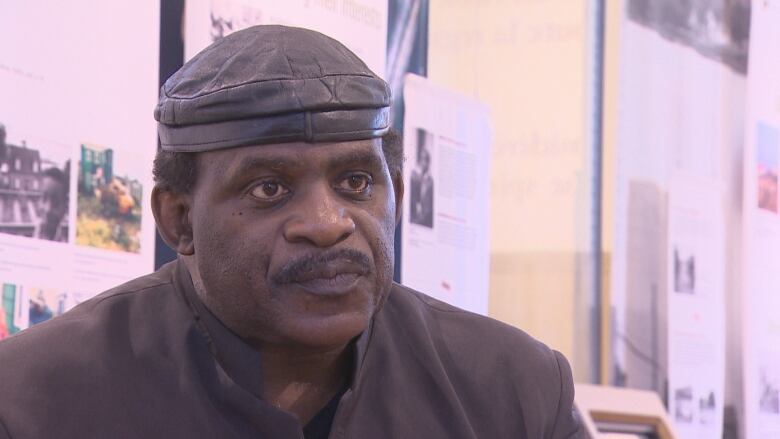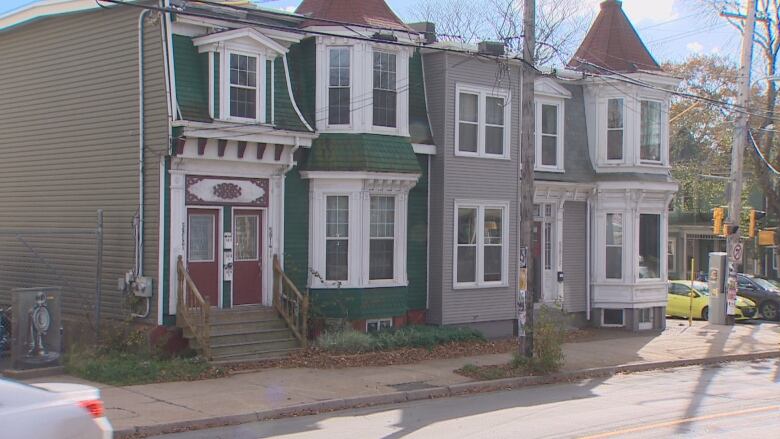A troubling reality of the Halifax Explosion relief effort racism
'They lacked power. They were not the centre of the action,' says retired history professor David Sutherland

Everyone needed help. But even in thatthere wasracism.
The relief effort following the Halifax Explosion has become ingrained in the story of the tragedy: Trains full of medical supplies, doctors arriving from Massachusetts, money flowing in from as far away as China and New Zealand.
But a little-explored aspect of theDec. 6, 1917, disaster, which killed about 2,000 people and flattened parts of the city,is the role race played in how support was distributed in the aftermath, particularly the barriers faced by the city's black population.
It's a "complete void" that David Woods, a Dartmouth playwright, artist and storyteller, is seeking to fill. Along the way, he haslearned some sobering facts, including how unfairly some blacks were treated by the Halifax Relief Commission, which distributed federal government money to families who had lost property.
"The person who was in charge of the reparations basically sent out a memo indicating to staff that blacks who were applying for relief, their claims should be automatically be reduced 20 per cent or ignored and so this was a policy," Woods says.
Within the next year, Woods will stage Extraordinary Acts, his new play that tells the stories of lesser-known black people during the Halifax Explosion. It centres onDr. ClementLigoure, a Trinidad-born physician whose private hospital on North Streetbecame a dressing stationfor those withnon-critical injuries.

Historian David Sutherland, who recently published the book We Harbor No Evil Design, which discusses the rehabilitation work after the explosion, agrees that little detailed research has been carried out on the experiences of black peopleduring and after the explosion.
"The black community in Halifax, at that time, and the time of the explosion, was a marginalized community," says Sutherland, a retired Dalhousie University professor who is a member of the Halifax Explosion 100th Anniversary Advisory Committee.
"They lacked power. They were not the centre of the action, so they tended to get overlooked by contemporaries not totally, but to some degree."
He's one of the people who want to know more, but finding the material evidence is difficult. Sutherland devotes a chapter of his book to exploring the Halifax Relief Commission's case files of seven black families, most of whom lived downtown near Cornwallis Street just south of Africville, the black community that was located on the shore of the Bedford Basin.
"One virtue of these files that I've worked with is that suddenly these people that have been without a voice are appearing."

When it came to black families getting help, there is clearly a pattern of racism, Sutherland says.
As an example, he notes a discussion at the Halifax Relief Commission about whether to place a black widow with six children into temporary public housing being built in three locations for those left homeless.
In the end, one of the commissioners, Judge William Wallace, intervenes and says the mother and children will go into the housing, according to Sutherland, and that it would "integrate at least to the extent of one family."
"It provokes a huge ruckus," says Sutherland. "One of the neighbours, in particular, threatens to beat up one of the housing authorities for daring to let a black family into what he wants to be an all-white neighbourhood."
Discontinued food allowances
In other cases, black families were given food allowances that were then discontinued, even when they were still in dire need.The commission was preoccupied with money running out, Sutherland says, and its workers tended to force people back to work as soon as possible by suspending their food supplies.
In his book, he writes: "More subtle forms of discrimination included tagging clients as being 'mulatto' or 'coloured'; hinting at the presence of venereal disease; offering relatively low payment on claims for lost and damaged property; early and arbitrary suspension of food supplies; and the persistent neglect of residents of Africville."
Sutherland says while the Halifax Relief Commission had "no smoking gun" or policy that said blacks should be given less relief than whites, itplayed favourites.
However, he points out, blacks did have equal access to medical care and hospitals, and were treated by the various clinics throughout the community set up to deal with continuing medical problems.

Woods says his research shows there were eight African-Nova Scotian deaths officially recorded in the Halifax Explosion, and that possibly four of those deaths were people from Africville.
Sutherland says most of the deaths of black residentswere recorded. But there's one glaring exception. He's perplexed the provincial government never issued a death certificate for Aldora Andrews, an-eight-year-old girl who was killed in the explosion.
The play Woods plans to stage will introduce audiences to various people who went through the Halifax Explosion, including Africville painterEdith MacDonald-BrownandEmily Clyke, the sister of civil rights icon Viola Desmond.
"You get to the Halifax Explosion, which is one of the signature events that Halifax is known for internationally, and again you go back to a complete void of not hearing anything about yourself," he says.












_(720p).jpg)


 OFFICIAL HD MUSIC VIDEO.jpg)
.jpg)



























































































